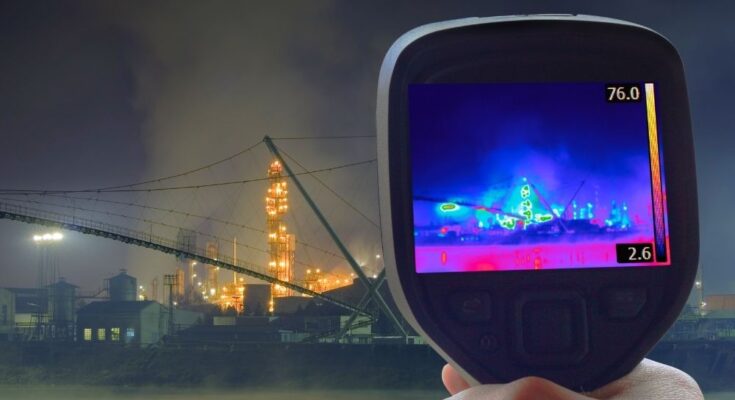Have you ever wondered how facilities manage their potentially hazardous equipment? Learn about the four different types of emissions leak detection methods that are used in modern facilities everywhere.
Acoustic Emissions Detection
Acoustic emissions detection is a tried and true method used throughout refineries globally. This process involves affixing small electronic sensors onto the test object and monitoring for stress waves. Then, you can convert these stress waves into readable electrical signals and process them through an acquisition PC. From there, you monitor various factors, such as acoustic emission intensity, activity, and loudness, to ensure ideal processes and conditions. Ultimately, acoustic emissions detection is highly effective at discovering delamination, corrosion, fiber breakages, impacts, and more.
Infrared Thermography
Infrared thermography uses thermal imaging to identify radiation and make it visible to the human eye. It’s one of the most effective and widely used methods for emissions leak detection thanks to its accuracy, convenience, and ease of application. Radiation, or heat, is often a clear indicator of escaping gases. With a solid infrared thermography system in place, refineries can quickly identify these issues and begin the time-sensitive repair and resolution process.
LDAR Software
Many refineries feature advanced Leak Detection and Repair (LDAR) software that simplifies the emissions control process through artificial intelligence and automation. LDAR software programs are one of the four key components of successful LDAR programs as they expedite many time-consuming procedures, such as documentation or uploading daily reports. Combing LDAR software with other methods on this list can improve your refineries’ ability to quickly identify problems, enact the proper solutions, and maintain an overall functional LDAR program.
Ultrasonic Detection
Like the other methods on this list, ultrasonic detection is a non-destructive testing technique that yields highly accurate results. Similar to how a submarine safely navigates in the darkness of the ocean, ultrasonic detection uses ultrasonic waves to map unseeable objects. When using a piezoelectric transducer and flaw detector, short pulse waves reach the testing object, where they detect flaws such as internal corrosion or breakage. Additionally, ultrasonic detection is ideal for testing the material thickness of various refinery equipment and infrastructure.
These are some of the many different types of emissions leak detection methods implemented throughout refineries globally! Ultimately, these technologies improve worker safety while significantly reducing negative environmental impacts.



